Posts Tagged lawn care
Fall Landscaping Prep: Preparing Your California Yard for the Changing Season
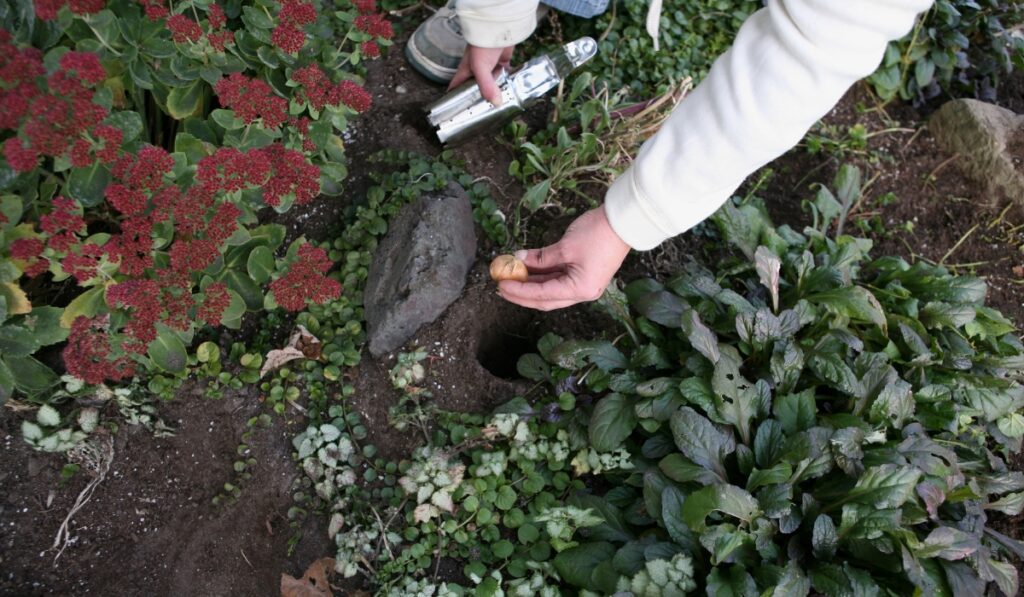
As the summer sun begins to soften and the days grow shorter, it’s time to shift our focus to fall landscaping preparation. At DK Landscaping, we understand the importance of transitioning your yard smoothly into the cooler months, ensuring a healthy and beautiful landscape that thrives through winter and bursts with life come spring.
Cleaning Up Summer Debris
The first step in fall landscaping prep is a thorough cleanup. Remove any fallen leaves, spent flowers, and debris from your yard. This not only tidies up the space but also helps prevent pests and diseases from overwintering. Pay close attention to areas around trees and shrubs, where fallen leaves can accumulate and create a damp environment that encourages fungal growth.
Preparing Soil for Fall Planting
Fall is the perfect time to revitalize your soil and prepare it for new plantings. Incorporate organic matter like compost or well-rotted manure into your garden beds. This improves soil structure, drainage, and nutrient content, providing a nourishing environment for your plants to establish strong roots.
Protecting Plants from Early Frosts
While California enjoys relatively mild winters, early frosts can still occur, especially in inland areas. Take preventative measures to protect sensitive plants:
- Covering: Use frost blankets or burlap to cover tender plants during cold nights.
- Mulching: Apply a thick layer of mulch around the base of plants to insulate the roots and protect them from freezing temperatures.
- Moving Container Plants: Bring potted plants indoors or to a sheltered location to shield them from frost.
Additional Fall Landscaping Tips
- Lawn Care: Aerate your lawn to improve drainage and reduce compaction. Overseeding can help thicken thin or bare spots.
- Pruning: Prune summer-flowering shrubs and trees after they finish blooming to encourage new growth in the spring.
- Irrigation: Adjust your watering schedule to accommodate cooler temperatures and reduced plant needs.
- Pest and Disease Control: Monitor your plants for signs of pests and diseases, and take action as needed.
DK Landscaping: Your Partner in Fall Landscape Preparation
Preparing your landscape for fall can be a daunting task, but DK Landscaping is here to help. Our team of experienced professionals can assist with everything from debris removal and soil preparation to plant protection and winterization. We’ll ensure your yard is ready to face the changing seasons and emerge healthy and vibrant in the spring.
Contact us today for a free consultation and let’s get your landscape ready for a beautiful fall and winter.
Remember, fall is a time of transition and renewal in the garden. By taking the necessary steps to prepare your landscape now, you’ll set the stage for a thriving and beautiful garden in the seasons to come.
The Ultimate Guide to Year-Round Yard Cleanup and Maintenance
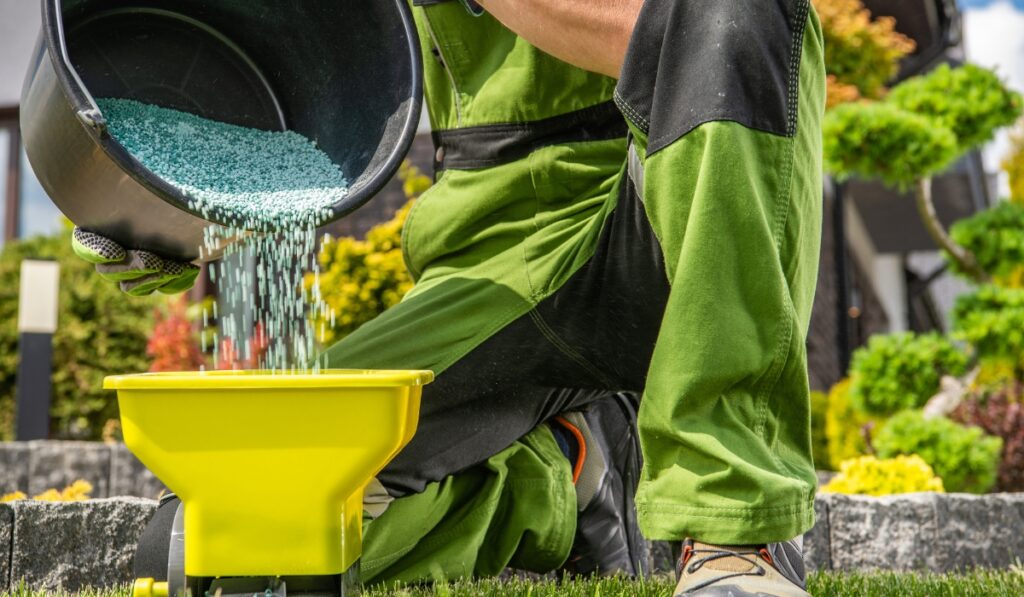
Maintaining a beautiful yard is a year-long commitment that requires careful planning and execution. With each season comes a new set of challenges and opportunities to enhance your outdoor space. This comprehensive guide will walk you through the essentials of year-round yard cleanup and maintenance, ensuring your garden thrives in harmony with the changing seasons.
Spring Awakening
As spring unfurls its fresh canvas, the awakening of your garden heralds a season of rebirth and rejuvenation. This period is pivotal for setting the tone for a flourishing garden throughout the year. Begin with a thorough cleanup, removing winter’s remnants—such as fallen branches, leaves, and other debris—to clear the way for new growth. Pruning plays a crucial role in spring; it not only shapes your plants but also promotes healthy development and blossoming. However, it’s essential to know which plants benefit from spring pruning, as timing can affect flowering and growth.
Aeration is another vital task; it alleviates soil compaction, allowing air, water, and nutrients to penetrate the grass roots, laying the groundwork for a vigorous lawn. Early spring is also the ideal time to rejuvenate your garden beds, preparing them for the season’s planting. Incorporating organic matter or compost improves soil health, providing a nutrient-rich environment for plants to thrive.
As new life sprouts in your garden, consider the layout and plan for seasonal additions. Early spring is an opportune moment to plant hardy annuals and perennials, which will establish themselves quickly in the cool, moist soil, ensuring a vibrant display as the seasons progress. By embracing these springtime rituals, you cultivate not just a garden but a sanctuary that grows in beauty and vitality with each passing year.
Summer Vigilance
In the height of summer, your garden enters a phase of intense growth and vitality, necessitating vigilant care to sustain its beauty and health. This period requires a proactive approach to weed management. Regularly removing weeds prevents them from competing with your plants for essential nutrients and water. Mulching becomes an indispensable ally, serving a dual purpose: it conserves soil moisture, crucial during the sweltering days, and acts as a natural barrier against the emergence of unwanted weeds.
Efficient water management is key during this time. Checking and adjusting your irrigation system ensures that your garden receives the right amount of water without waste, a critical consideration during times of potential drought. Adjusting watering schedules to the cooler parts of the day minimizes evaporation and maximizes the water’s benefit to your plants.
Mowing practices should adapt to the summer conditions as well. Keeping the grass at a slightly longer length than usual helps to protect the roots from the intense sun and heat, promoting a healthier, more resilient lawn. This approach not only enhances the green lushness of your garden but also supports its overall ecosystem, encouraging a balance between beauty and sustainability as the season unfolds.
Autumn Preparation
As autumn paints the landscape in vibrant hues, it’s a signal to start preparing your garden for the impending cold. This season is crucial for maintenance tasks that protect and invigorate your garden’s future growth. Raking and removing fallen leaves are essential to avoid mold and fungus, which thrive under damp, decomposing foliage. Autumn’s cool weather is also ideal for overseeding and fertilizing your lawn, setting the stage for robust, green growth when spring arrives.
Planting bulbs during this time promises the reward of early blooms, offering a burst of color at winter’s end. Additionally, autumn is when you should begin winterizing tasks, such as protecting sensitive plants from frost and preparing irrigation systems for the freeze, ensuring they remain functional for the next growing season. This proactive approach not only preserves your garden’s beauty and health through the winter but also lays the groundwork for a flourishing landscape in the year ahead.
Winter Care
Winter’s quiet might suggest a pause in garden activity, but it’s actually a critical period for protective measures and forward planning. Wrapping plants in burlap or frost cloths shields them from the harshest winter elements, preserving your garden’s vitality. This dormant season offers a valuable opportunity for reflection and strategy: assess the past year’s successes and areas for improvement. It’s a perfect time to dream up new garden layouts or consider different plant varieties that could enhance your garden’s diversity and resilience. Planning during these colder months ensures that you’re ready to spring into action when the weather warms, with a clear vision for your garden’s future.
Landscape Maintenance – Just Right this Thanksgiving
Thanksgiving is just around the corner and its time to get your home spruced up to meet all the guest that will be visiting during this wonderful time of year. In all the excitement and all the things to do, you should never forget your landscape maintenance. Why you might ask? Well its your landscape that meets the eye of your guest first and you want them to enjoy every inch of your surroundings, so you better get started right now!
Whether its the pesky mother-in-law or the who’s of who that you’re trying to impress, don’t hesitate to get your lawn in shape by hiring the experts in lawn care and maintenance. Now here’s the deal. If you’re sure you want to get all things in shape for your thanksgiving home gathering then you’ll need to understand a few things first.
What Real and Professional Landscape Maintenance Involves

Not everybody knows how to treat a lawn and get it looking its best and here’s where we come in. You see a lustrous landscape will require some degree of attention and education. Now as seasons change so do maintenance techniques and in the fall best practices include:
- Watering and Mowing
- Soil Aeration
- Fertilizing during Fall
- Filling in Bald Spots
- Weed Control
Its very important that you continue to water and mow your lawn, as needed, throughout the fall. Secondly expert lawn care providers will know that soil aeration is critical especially during fall. When this is done oxygen, water and fertilizer can easily reach the root of your grass.
The third important aspect of maintenance is the application of fertilizer during the fall. This action delivers essential nutrients which gives your grass the ability to grow deep roots now and also keep nutrients in the tank until next spring season. The filling of the bald patches is next on the list at number four and we use a special lawn repair mixture that will give the garden a full body and a great look that will make your neighbors die for.
Last but not least is weed control and most herbicide manufacturers recommend applying the weed killer during early-to-mid autumn. Apply this now and your garden will be weed free even next spring.
There’s no doubt that we can give you all the assistance and lawn care advice needed. Contact us if you want to enjoy the benefits of our expert advice and reap the rewards of real landscape maintenance.
Fall into These Horticulture Habits for Winter
Shuttering your garden for the fall is easier than you might think. You probably already know to clean up any debris and uproot weeds that love nothing more than to spread, but there are a few more horticulture steps that can really put you on the right path for a renewal in spring and bounteous summer harvest.
Get Your Garden Cleaned Up
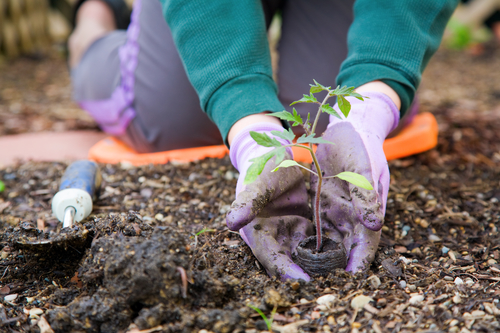
It might be tempting to dust off your knees, climb out of your garden, and let nature take its chilly winter course. The thing to realize is that while that might be easier now, you could be setting yourself up for more work later. Prepping your soil – and perhaps planting a cover crop – and replenishing your mulch can make life so much easier in early spring next year.
You want to remove any weeds you find or decayed plants before your ground gets too cold. A professional landscaping company can help you remove weeds, prune perennials, and even turn your fall leaves into mulch and compost that nourishes your soil year round.
If you’re really strapped for time, though, and you don’t want weeds to grow then put plastic or cardboard over existing weeds and leave that cover on through the winter to keep weeds from spreading. Or call on DK Landscaping and get landscaping experts to clean up your garden in time for winter.
Making a light pass of your garden with a tiller can also clear your garden of insects that plan on overwintering (spending the winter) in your soil. Insects like grubs and beetles want to hunker down and spend the winter in your soil, but these same insects can ruin your plants and screw up your soil!
A Horticulture Essential: Prepping Your Soil for Winter
The plants in your garden are actually more complex than they might look at first glance. When your garden’s soil doesn’t have the nutrients that your plants need to grow to their full potential, they emit stress hormones that can make it easier for nearby insects or diseases to take hold of your garden. That’s obviously not what you want.
Late fall might actually be the best time of the year to call on a company like DK Landscaping to test your soil to make sure that it contains the right kind of nutrients to promote plant growth. DK’s horticulture experts will look to see how much organic matter is in your soil, gauge the level of mineral nutrients in your soil that your plant roots can absorb, and measure levels of potassium and phosphorous.
(Nitrogen, phosphorous, and potassium are your soil’s three main macronutrients. Potassium helps for water retention in your garden and nitrogen and phosphorous ensure that you get early growth and healthy roots.)
That might sound really complicated, but a simple test can tell you a whole lot. Something as simple as adding lime to your soil can help bring your soil’s pH into balance too. Adding lime is also really good to do in late fall because it takes a while for the soil to absorb it. Time is your friend in the winter months when your garden is basically laying fallow.
Leaves are Solid Gold for Your Garden
Once you’ve tested your soil, you’re going to want to apply some kind of mulch (goes on top of soil) or compost (goes into soil). Chopped-up leaves sprinkled over your garden will enrich your soil, improve water retention, and stop weeds dead in their tracks.
DK Landscaping can handle more complex horticulture and help you with regular garden maintenance, irrigation, and general landscaping in fall and throughout the year.
8 Essential Lawn Treatments for a Healthy Lawn
A healthy and vibrant lawn does not just happen. It takes a lot of care and treating it the right way. You can get a lush yard by using the best lawn treatment practices. Time your treatment procedures correctly to avoid damaging the turf by exposing it to weed, pests, and weather damages.
Although each lawn is unique, there are common lawn care practices for people wanting an evergreen, lush lawn. Here are 8 essential treatments for a healthy lawn.
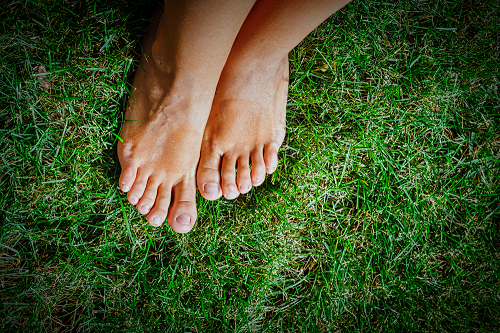
Plant Types
Find out the best plants to grow in your location. You can grow warm-season or cool-season plants- depending on your climate. The climate and plants you grow will determine the herbicides and pesticides to use. Consult with your lawn treatment specialist to help you select the ideal plants for your yard.
Mowing
The best time to mow your lawn is early in the morning or late evening when the temperatures are low. This protects your grass from going into shock.
When cutting your grass, adjust your blades to help you trim the top third of the lawn grass. This is called the one-third rule of mowing. Avoid mowing wet grass as it clogs the mower blades, causing them to transmit diseases across your yard.
Weed Control
Prevent weeds from growing in your yard to get a healthy lawn. Proactive weed control helps you stop pre-emergent weeds. Do this continually to avoid the weds from resurfacing in the next season.
You can achieve this by using targeted weed control, where your lawn treatment expert tests the soil to find out the predominant weeds and their growing seasons. This helps you use pre-emergent weed control measures to eliminate all weeds in your lawn.
Avoid toxic herbicides that may harm your grass, pets, and the environment. Study the labels on herbicides and follow the instructions, or let a lawn expert apply them for you to avoid undesirable results.
Watering
The amount of water and frequency of watering depends on the climate. If you receive enough rain, your lawn will grow well with minimal watering. Look out for signs of water shock to know when your yard needs watering.
The best test for water shock on a lawn is walking on it and observing if your footprints remain visible. If they do not, the grass has sufficient water.
Water your lawn deeply and infrequently to ensure it has enough water to support the grass to grow healthy. The yard should drain well so that the grass is watered uniformly without any parts forming water puddles that can damage your turf.
Aeration
Harsh weather conditions and heavy foot traffic may cause compacted soil ad dense thatch to form on your lawn. This blocks pathways for water, nutrients, and water, leaving the yard looking unmaintained.
If your pets spend all the time on your lawn, they may ruin it if they do not have specific urination spots. Assess the yard to note the damages you need to correct during aeration.
Aeration reduces soil compaction, water run-off, and thatch build-up. As professionals aerate your lawn, they will test the soil to determine nutrients deficiency to advise you on the best fertilizers for your turf.
Overseeding
After aeration, you should spread grass seeds over your turf to encourage new growth to replace damaged grass. This improves the overall appearance and health of your lawn. It also ensures there are no bare spots on the turf.
A thick turf leaves no room for weeds to grow. It is also easier to control pests on a thick turf since they don’t have spaces to hide in.
Fertilization
The right kind of fertilizer and accurate application timing is essential for a healthy, vibrant lawn. Ensure the fertilizer is appropriate for the issues your yard is experiencing, such as bare spots, dry conditions, or nutrients depletion. Read the labels on your fertilizers to know the amount you need for your lawn and the right season to apply it.
Pest Control
Pests on your lawn are dangerous to people and plants. Assess your yard to know the existing pests to control them effectively. Some common pests include fire ants and grubs that cause extensive damage to lawns when they burrow the soil and feed on plant roots.
Some pesticides are harmful to humans and pets. Examine the labels on the containers to know how to handle them. You may also apply them when you expect minimal activities in the yard, such as overnight or when away. You can also use organic pesticides to minimize their effects on the environment.
Soil Amendment
Most lawns grow well if the soil has a pH level of 5.5 to 6.5. Too much acidity damages roots, preventing them from absorbing nutrients.
Soil amendment helps you balance the pH level to suit the type of grass on your lawn. Call a lawn treatment expert to test the soil and advice you on the best way to balance the soil pH level.
Lawn Treatment Basics
Lawn Treatment Basics Maintaining a healthy lawn can be an overwhelming undertaking for anyone. You have to find and use the correct fertilizers, pesticides, and treatments to control weeds and keep bugs at bay. If left untreated, your yard can turn into an eyesore due to the brown patches and out-of-control weeds. With the help of a landscaping professional, this does not have to be the case. Here are a few lawn treatment basics that you need to know to keep your turf green and healthy throughout the year.
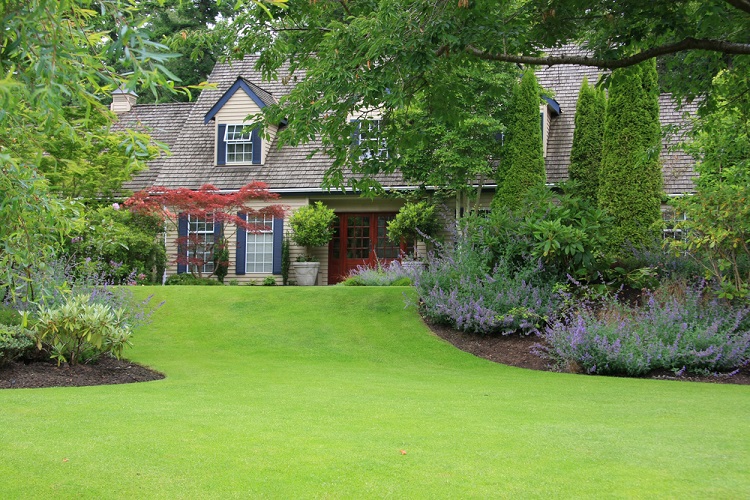
What is Lawn Treatment?
Lawn treatment refers to a series of tasks to protect your lawn from pests and weeds and ensure healthy grass growth throughout the year. It may entail spraying, fertilizing, dressing, watering, and mowing the grass to make sure it remains damage-free all year round.
As the grass on your lawn grows, it will likely attract all sorts of weeds and plant-eating pests. Pest invasions and uncontrolled growth of weeds may wreak havoc on your landscaping, leading to brown patches and stunted grass.
Applying various treatments correctly and appropriately can help save your lawn from dying and ensure it remains green and lush just the way you want it.
Types of Lawn Treatment
As you already know, lawn treatment involves several activities to help keep your grass healthy and vibrant. The four main types of lawn treatment you should know about include:
Fertilization
The soil on your lawn may not provide all the nutrients required for healthy growth. For this reason, consider adding fertilizer to your yard to help promote foliar and root growth. You have the option to use either commercial or natural fertilizer formulated for that particular season.
Make sure the fertilizer contains vital nutrients such as nitrogen for foliar growth and phosphorous for root growth. If you prefer organic fertilizers, consider using compost or natural ingredients like blood meal and meat meal.
Pest Control
Well-maintained lawns are not immune to pests and insects. No matter how healthy your lawn seems, it will still attract all sorts of bugs and insects such as beetles, sod webworms, crickets, fire ants, chafer grubs, fairy rings, and liverworts. It may also attract millipedes and rodents like moles.
Without proper interventions, lawn pests can cause tremendous damage to your landscaping in the long term. You can use various lawn treatments such as pesticides and insecticides to keep these bugs at bay.
Weed Control
You will notice unwanted plants growing on your lawn after a few weeks or so. These weeds can wreak havoc on your yard as they will be competing with your grass for nutrients.
Fortunately, with the correct weed control treatments, you can prevent these unwanted plants from growing in the first place and eradicate those that have already started growing. Pre-emergent herbicides destroy weeds before they start growing, while post-emergent herbicides eradicate already established weeds.
Disease and Fungus Treatment
Brown or dead patches on your lawn are a sign of disease. Lawn diseases usually result from fungus, poor lawn care practices, excessive mowing, overwatering, humidity changes, temperature fluctuations, drought, and excessive use of fertilizers.
The good news is that you can tackle different lawn diseases using various treatments. Fungicides come in handy when treating fungus, while you can mitigate environmental causes by applying the appropriate lawn care techniques.
Benefits of Lawn Treatment
The benefits of lawn treatment are almost countless, and they include:
Root Development
Using the correct lawn treatments will help develop a solid and healthy root system for your grass. The grass will set firm roots in the ground, making it hard to uproot or erode through natural processes.
Even Distribution of Nutrients
The soil in your lawn may not have all the nutrients required for healthy plant growth. Fertilizing your yard will make sure the grass receives all the vital nutrients for healthy growth. Fertilization also ensures the even distribution of nutrients across your lawn.
Disease Resistance
Your lawn may experience various diseases caused by environmental factors and pests. Even though lawn diseases are common, you can make your turf less vulnerable by applying proper treatments.
Pest Resistance
Your lawn will inevitably attract all sorts of bugs and insects ranging from crickets to chafer grubs. Fortunately, you can boost your lawn’s resistance by spraying various treatments and pesticides.
Soil Conservation
Lawn treatments promote healthy growth and protect the soil from environmental stressors such as drought and runoff. They also help improve the soil’s composition by adding missing nutrients such as phosphorous, nitrogen, and potassium.
Weed Control
One of the most significant benefits of lawn treatments is weed control. Using the correct treatment will keep weeds from your lawn, subsequently ensuring the grass does not have competition for vital nutrients.
Hire a Lawn Treatment Expert
Knowing when and how to treat your lawn is vital for healthy grass growth. You must know when to fertilize, weed, and spray to keep bugs and weeds at bay. A wrong schedule can cause tremendous damage to your lawn, leading to dead and brown patches.
Our experts at DK Landscaping can help schedule your lawn treatment appropriately and ensure your yard remains lush and healthy throughout the year. Contact us to learn more about our services.
Setting Up a Sprinkler System Design to Save Water
Nothing is as gratifying as living in a home surrounded by blossoming flowerbeds and thriving lawns. Green and meticulous landscaping can transform any dull compound into a beautiful little paradise. However, if you live in a dry or semi-dry area, maintaining a green lawn throughout the year might prove to be a challenge. This is the point where investing in a good sprinkler system design comes in handy.

What is a Sprinkler System?
A sprinkler system refers to an irrigation system that waters your gardens and lawns without requiring much effort. It consists of a pump, a set of pipes, laterals, and sprinklers that all work together to extract, transport, and spray droplets of water to your garden, lawns, and flowerbeds.
The essence of this system is to irrigate your lawn and landscaping without your intervention using the least amount of water. You can set it up to be watering your lawn automatically at specific times of the day, even while you are away.
The benefits of installing a sprinkler system in your yard can never be understated. Sprinkler systems ensure your lawn remains green throughout the year while saving you from the hassle of having to water your garden every day.
Components of a Sprinkler System Design
A basic sprinkler system design consists of five major components. These include:
1. Pump
For a sprinkler system to work effectively, it must come with a pump. The work of the pump is to draw water from the source and push it into the piping system. The pumping system produces adequate pressure to extract and discharge water into the sprinkler system for efficient irrigation.
2. Pipes
The sprinkler system also consists of a network of pipes that transport water from the pump into the laterals for even distribution during watering. Your landscaper may install the pipelines above or below the ground depending on the design of the sprinkler system. Since the pipes remain exposed to harsh elements, they consist of rigid materials such as asbestos cement or aluminum alloy.
3. Laterals
The laterals are the tubes between the valves and the sprinkler heads. They hold water temporarily until the system turns the valves on or off. Laterals do not require much strength to function, and they usually consist of cheap materials such as plastic.
4. Valves
The valves open and close the laterals, allowing water to enter into the sprinkler heads for distribution. Each valve controls a different irrigation zone. The valves essentially divide the various watering zones allowing them to run independently.
5. Sprinkler Heads
There are several different sprinkler heads, but the two main types of sprinklers are rotary sprinklers and spray nozzles. As the name implies, the sprinkler head receives water from the pipes and sprays it on your lawn or garden in the form of water jets or droplets. The sprinklers are positioned strategically throughout the compound to ensure even watering.
Controllers and Rain Sensors
Modern sprinkler systems come with a controller and a rain sensor. The controller is the epicenter of the sprinkler system. You can program it to run the sprinkler system at specific times of the day and determine how long you want the system to stay on.
Highly advanced sprinkler systems have rain and moisture sensors integrated into the controller box. These sensors automatically detect the level of moisture to determine when to activate or deactivate the sprinkler. Some are even capable of automatically suspending a watering session in case of rain.
How to Set Up a Sprinkler System Design
No doubt, sprinkler systems are essential in keeping our lawns and gardens green throughout the year. However, they can be wasteful if set up incorrectly.
Here are the steps on how to set up your sprinkler system for efficient and effective watering:
- Obtain all the necessary permits and approvals before beginning the installation process
- Determine your water pressure to help you space your sprinklers. Ideally, the pressure required for each sprinkler head should be equal to the radius it needs to spray. For instance, if the water pressure is 48 psi, you may place six sprinkler heads with an 8-foot spray
- Map out the sprinkler system and dig the trenches
- Connect the pipes to the main water supply
- Install the zone valves
- Install the pipelines in the trenches
- Connect the pipes to the zone valves
- Install the sprinkler heads
- Install the ground heads
- Connect the controller
Call the Pros to Set Up Your Sprinkler System Design
A good sprinkler system design should use the least amount of water, and it should give you maximum control over how and when the system should water your lawn. However, installing the system can be a massive challenge even for seasoned do-it-yourselfers. That’s why it is always a good idea to involve the pros.
Our experts at DK Landscaping can help you set up your sprinkler system to save water while keeping your landscaping green throughout the year. Contact us to learn more about our services.
Hire a Xeriscape Santa Rosa Expert When Facing Landscaping Problems
Some property owners have let their lawns go despite the intense focus on exceptional property exteriors and interiors. Though you might assume that the yard contributes little to your property, remember that people will base their opinion on what to expect in your interiors on what they see in your outdoors. Drab and messy lawns only paint your home or commercial premises in poor light.
You only get one chance for the best first impression, so you must make it count by hiring an expert to make your lawn. Some property owners think they have what it takes to plant and maintain exceptional landscapes. To them, a xeriscape Santa Rosa expert is unnecessary, even when in dry locations. Nonetheless, handling lawn care as a DIY project often leads to mistakes highlighted below.
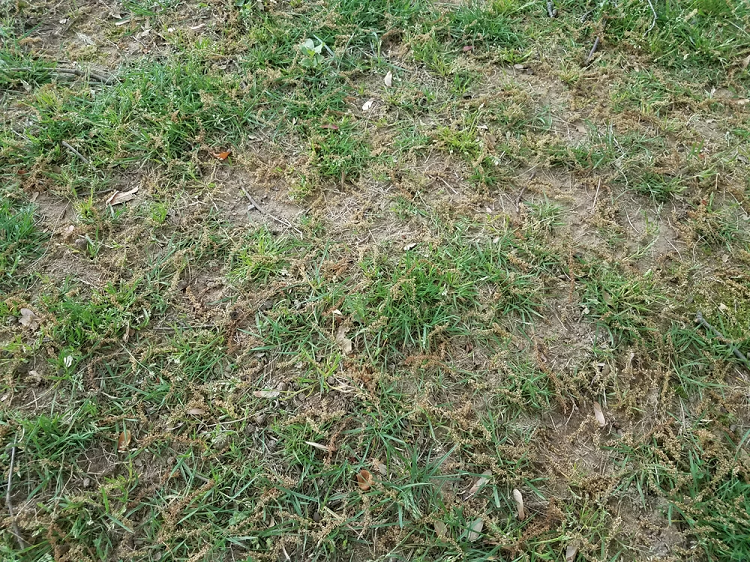
Too much shade
Shade is essential when putting together the perfect landscape. It protects plants affected by excessive sunlight and introduces some interesting height variations in your outdoor. Nonetheless, large trees and structures can lead to excess shade. An expert can help you choose the ideal trees to plant on your lawn for just the right amount of shade or raise the canopy of your trees.
Voles and moles, among other critters
It is easy to pick mole damage on your lawn. This critter creates tunnels under the soil, thus pushing the ground and creating unsightly ridges on your property. Raccoons and skunks can also invade your yard to dig for food. You need a lawn care company well-versed in ways of humanely getting rid of the critters on your lawn. Moreover, the experts will institute measures to protect your lawn from invasion by the common pests in your area.
Patchy grass
With this issue, you will notice that the grass in your outdoors grows at different lengths, strengths, and colors. The leading cause of a patchy lawn is spot seeding or reseeding with a different grass seed species from what you have used on the rest of your yard. It can also follow the wrong choice of a grass seed species for your soil or climate. Consulting a lawn care professional on the grass seed recommendation for your lawn will prevent patchy grass. For example, when reseeding northern lawns, it is best to use Kentucky bluegrass or perennial ryegrass, while tall fescue, Bermuda grass, or centipede grass work best for southern lawns.
Overwatering
Some property owners, especially those in dry areas and sandy soils, assume that watering their plants is the only way to ensure their lawns thrive. Though watering is essential, most DIY landscapers end up overwatering their lawns. Even in soils that retain water, plants have different water needs. When you overwater a lawn, you will usually notice mushrooms growing and the discoloration or yellowing of grass. Lawn care experts well versed in xeriscape Santa Rosa techniques will suggest alternative ways of ensuring your plants have enough moisture even in dry climates. They will also help you pick the right irrigation system for your space and use the right water amount to keep your plants thriving.
Compacted soil
The soil on your lawn is a living, breathing component. Its compaction following heavy equipment use and repeated mowing patterns shrinks the pores that promote the aeration of your soil, thus squeezing the life out of your lawn. Some of the signs of compacted soil are discolored, limp, dull, or thinning grass and pooling water. An expert will often regularly change your mowing patterns and aerate your lawn in the fall to ensure your plant roots have enough room for growth.
Turf diseases
If you notice a lesion on your leaf blades, patches, and a smutty substance on your lawn, these might be signs of lawn diseases. Some diseases like dollar spot and ascochyta are generally cosmetic, but others like necrotic ring spot can be deadly. There are several fungicides available for treating lawn diseases, but some can be deadly and worsen the condition. Hire a professional to evaluate the diseases affecting your lawn, recommend the right treatment for it and monitor your turf’s response to medication.
DIY lawn care is often an attempt at saving costs or putting everything you know about plants to the test. Though these are valid reasons, the above issues will cost you more money to manage than hiring a lawn care specialist well-versed in xeriscape Santa Rosa and other techniques of optimal lawn care.
For commercial properties, professional lawn care saves you on the dollars lost when some clients make a poor first impression of your business and opt for your competitors. Thankfully, professional lawn care is quite affordable and thus within everyone’s budget. Contact us today for the best-looking outdoor space.
Tips for the Best Sprinkler System Design
Your sprinkler system is essential for keeping your yard lush and healthy. When you invest in the best sprinkler system, you reduce your water usage and the time you spend tending your lawn. Here are some tips for the best sprinkler system layout for a hassle-free, flourishing yard.
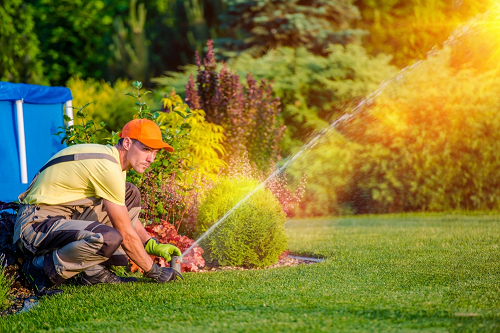
Determine the Size of Your Yard
Knowing the size of your yard is the first step in designing your sprinkler system. The yard size determines the size of your sprinkler system, the number and types of pipes, valves, manifolds, controllers, and the number of nozzles to use. When measuring your lawn, include the driveway, walkways, outdoor sheds, and your house.
Measure the Water Pressure
Your local water authority can give you a report on your property’s water pressure. But since the pressure may vary from one point across your yard to the other, measure the water pressure and gallon per minute from different locations. Hook a water gauge to an outdoor spigot, and then turn it on fully to detect the water pressure.
Measure the gallons per minute( GPM) water flow in your property by placing a gallon under a tap and recording the time it takes to fill up with water when you turn on the tap to full blast. The water pressure and GMP determine if there will be sufficient water flow in your sprinkler system to irrigate your yard.
If the pressure is low, you may need to operate sections of the sprinkler system separately. This is not a problem since the sprinkler sections serve areas with different watering needs.
Determine Your Hydrozones
Different parts of your property have varied watering requirements based on the soil type, type of plants, and shade covering. Shady areas require less watering than the areas that receive sunlight all day.
Besides, native plants may need less water, the same way clay soil needs less water than sandy soil since it holds water better. These hydro zones will help you set different watering frequencies on your sprinkler system.
Draw Your Sprinkler System Layout
Determine the layout of your piping, nozzle heads, valves, and irrigation controller. Draw your sprinkler system design on graph paper to a scale to ensure your measurements are accurate. This will tell you the number and size of fitting you require.
Select Your Sprinkler Heads
Pick sprinkler heads from the same brand since each brand designs sprinkler heads differently. You may need different sprinkler head designs to suit your hydro zones. Here are sprinkler head designs to consider:
- Spray Heads with Rotary Nozzles
They are ideal when spraying a large area. They can consistently sprinkle water to a radius of about 13-30 feet.
- Rotors
Fix the same size of rotors in each hydro zone for consistency. The rotor head size will depend on the area and radius you want it to reach. They can deliver water to 15 feet to 50 feet radius.
- Fixed Spray
Fixed sprays reach a radius of about 6 to 18 feet, with each sprayer delivering water to the same area consistently. Arrange your fixed sprayers to ensure a subsequent sprayer begins where its predecessor ends.
- Specialty Patterns and Bubblers
These sprayers deliver water to special landscapes areas such as lawn end strips, shrubs, and trees. They can throw water as high as 15 feet and up to 5 feet radius.
- Drip Irrigation
This sprinkler system consists of many small emitters that deliver water directly to a plant. They are laid on the ground in landscape beds and ground covers.
Acquire Your Sprinkler System Parts
Buy your sprinkler system parts from the same brand to ensure they integrate well. Ensure you pick the correct sizes and types for each hydro zone. You will need pipes, nozzle heads, manifolds, irrigation controllers, and valves.
Layout Your Sprinkler System
Follow your design sketch to lay out and join the sprinkler parts for each hydro zone. You can use common valves for small nozzle heads. You can also connect several valves to one controller.
Test and Adjust
Once you have assembled your sprinkler system, test if the sprinkler system layout works as expected. Note any anomalies and rectify them.
Test if the sprinkler system delivers water concurrently to all the parts of your yard or there are parts where the water pressure is insufficient. Some parts of the sprinkler may deliver water well when operated individually if they are affected by low water pressure and GPM.
Set your controllers appropriately to meet the watering frequency needs for each hydro zone. To get the best out of your sprinkler system layout, work with lawn experts with experience in designing, laying out, and maintaining sprinkler systems.
Are you looking for a reliable landscape maintenance company to help you with your sprinkler system design? Reach out to us. We will test your water pressure and GPM to determine the best sprinkler system parts and layout.
We will also help you identify your hydro zones for the best sprinkler system layout. Contact us today to discuss your landscape maintenance project.
Lawn Treatment Tricks and Insights
An outdoor space improves the aesthetics and comfortability of your home. It is very refreshing to look at the green grass outside your house on a summer morning. However, this luxury comes at a price. You must consistently take care of your lawn if you want to maintain its beauty. Here are the popular lawn treatment tricks and insights.

Remove Moss, Thatch, and Weeds
Weeds and moss can suffocate your grass by reducing airflow to the roots. Weeds can grow anywhere, especially where there is grass. Typically pets and birds carry the seeds of weeds onto your lawn. Even your shoes and clothes can transport weed seeds.
Some weeds appear as flowers on your lawn, while others can become seed heads. Your best lawn treatment approach is to uproot the entire weed. Some homeowners use their hands while others prefer tools. If weeds cover your entire lawn or a large part of it, you may have to use an herbicide. However, the herbicide should have very few toxic chemicals.
Work on Your Drainage
Poor drainage causes waterlogging on lawns. In some instances, the water can remain on your property for weeks. If this situation persists, your yard will lose its grass and other plants. Thankfully, it’s very easy to improve the drainage.
First, you must identify the causes of the drainage. If the area you stay at has clay soil, then water may not seep through easily. That is because high levels of soil compaction create an impermeable layer.
The cheapest way to improve soil permeability is through improved aeration. Soil aeration will increase air and water flow to the soil. This will create cracks within the soil where water can flow through.
Changing the type of soil is another solution. You can purchase soil with the right permeability. However, this process is expensive and tedious. That is why some people approach it from a gradual perspective. They introduce organic materials into the soil over a long period. These organic elements improve soil permeability with time.
Aeration
Aeration is the process through which water and air penetrate the soil. The roots need to acquire nutrients. If you want to improve your lawn treatment efforts, you will need to work on the aeration.
You have to create some holes in the soil. These holes will be situated at specific intervals. The equipment you will mostly need is aerating shoes and a garden fork. Fortunately, you can do the aeration in a matter of days. Once you’re done with the aeration, it will be several years before you will need to conduct another aeration process. When a problem occurs at a particular part of the lawn, you can attend to it individually.
Overseeding
If your lawn has been in use for a long time, it may become worn out and tired. As a result, you need to rejuvenate it once in a while. One of the ways you can approach this is by introducing overseeding. This is where you add fertilizers to a huge amount of seeds. The mixture fills worn out parts of the soil. It also enhances the color of your lawn and prevents the growth of weeds.
Overseeding is a process that requires extensive lawn treatment preparation. Before the process starts, you must aerate and scarify your lawn. You will need spiders and top dressing equipment to do this.
Edging and Mowing
Mowing may look like a simple lawn treatment process, but it requires some special techniques. For example, you should not remove more than 30% of your grass length during mowing. However, other factors are variable. For instance, you need to mow your grass during the summer and spring. On the other hand, there may be no need to mow your grass in winter.
Conclusion
Lawn treatment is inevitable for any homeowner. You need to conduct regular maintenance activities to protect and maintain the beauty of your lawn. Fortunately, most of these things don’t require much investment. You can contact us today if you want to start your lawn treatment journey.





